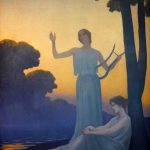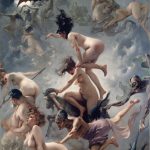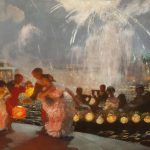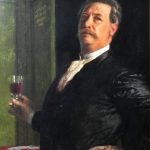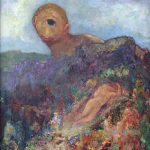
Gaston Bussière, a French Symbolist painter, was born on June 25, 1862, in Cuisery, France. His artistic career unfolded during the late 19th and early 20th centuries, a period marked by significant cultural and artistic shifts. Bussière is celebrated for his contributions to the Symbolist movement, where he explored dreamlike and allegorical themes, often infusing his works with a sense of mysticism and fantasy.

Bussière began his artistic training at the École des Beaux-Arts in Lyon before moving to Paris, where he continued his studies under the renowned academic painter Jean-Léon Gérôme. Despite his academic training, Bussière’s artistic vision evolved towards Symbolism, a movement that sought to convey emotions, ideas, and spiritual concepts through evocative and often enigmatic imagery.

One of Bussière’s significant influences was the Symbolist Gustave Moreau, known for his fantastical and mythological subjects. Bussière adopted a similar approach, creating paintings that often featured ethereal landscapes, fantastical creatures, and allegorical scenes. His works explored themes such as love, death, and the mystical aspects of existence.
Vibrant colors
The artist’s palette tended towards rich and vibrant colors, contributing to the dreamlike quality of his paintings. Bussière’s compositions often displayed a sense of fluidity and movement, conveying a feeling of otherworldliness. His use of Symbolist motifs, such as femme fatales and mythical beings, aligned with the broader Symbolist movement’s interest in exploring the subconscious and the fantastical.

Bussière’s fascination with the femme fatale is evident in paintings like “The Spider and the Fly” (1900), where he depicted a seductive woman surrounded by web-like motifs, symbolizing the allure and danger of forbidden desires. This theme, often explored by Symbolist artists, reflects Bussière’s interest in exploring the complexities of human psychology.
In addition to his exploration of symbolic and allegorical themes, Bussière was an accomplished portraitist. His portraits, such as “Portrait of Henri Rochefort” (1884), demonstrated his ability to capture the character and essence of his sitters while maintaining a touch of the fantastical.

Bussière’s involvement with the Parisian literary and artistic circles of his time further enriched his artistic pursuits. He collaborated with writers and poets, contributing illustrations to literary works and participating in the vibrant cultural milieu of late 19th-century Paris.

Despite his association with Symbolism, Bussière’s work also exhibited a certain degree of individualism. His unique blend of fantasy, mythology, and symbolism set him apart within the broader movement, and his paintings often stood as poetic expressions of his personal vision.
Success continues
Gaston Bussière continued to exhibit at major Salons in Paris and received critical acclaim for his imaginative and evocative works. His paintings, while not as widely recognized today as some of his contemporaries, remain significant within the context of Symbolist art.

Gaston Bussière passed away on October 29, 1929, leaving behind a body of work that reflects the dreamlike and allegorical spirit of the Symbolist movement. While his name may not be as prominent as some of his peers, Bussière’s contributions to the exploration of fantasy, symbolism, and the mysteries of the human psyche continue to be appreciated by those who delve into the rich tapestry of late 19th-century art.

